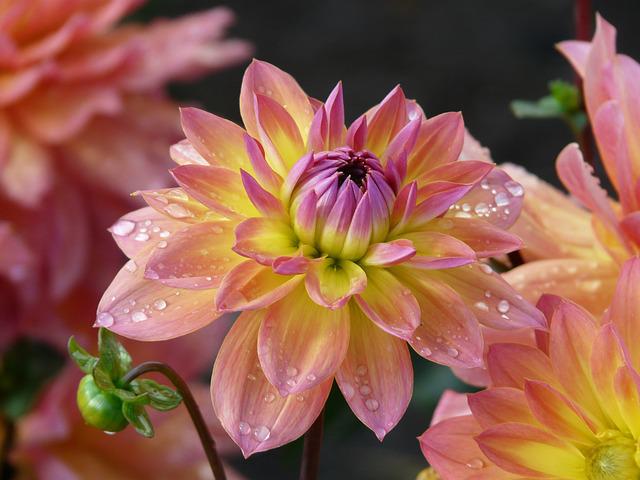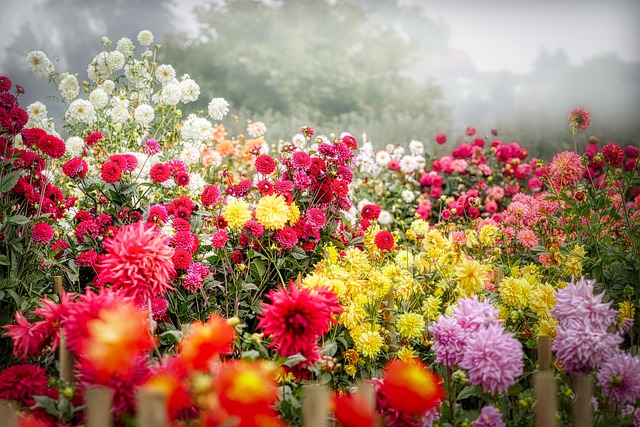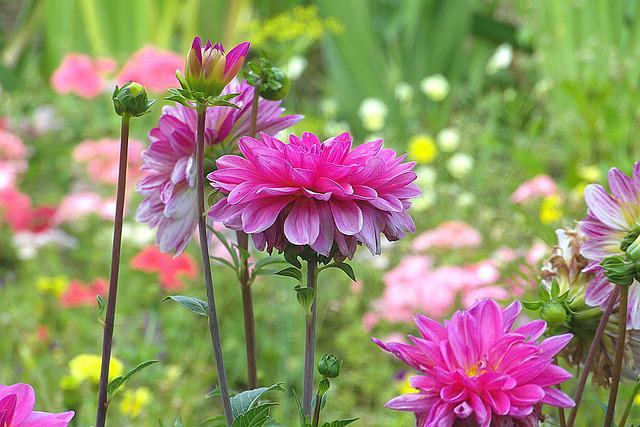When To Plant Dahlia Tubers? Know The Best Time to Plant Beautiful Dahlias

Plant dahlia tubers indoors in a sunny location in March or April. Move them to a more open location in May or June. Plant dormant tubers outside in the spring if you don’t have a greenhouse or a warm, bright indoor location to germinate. Dahlias multiply by dividing their tubers and growing other identical dahlia flowers. The most important thing to remember is to plant tubers in late spring after the chance of frost has ended and the soil temperature has reached 60°F (16°C).
As soon as the danger of frost has passed in the spring, you can plant your dahlia tubers outside. If you live in a cooler climate, you can plant dahlia tubers in the middle of May, while those in warmer zones should do so in early June.
Consider planting dahlia tubers around the same time you would plant tomatoes and continuing until about the middle of June.
Of course, if any late frosts are predicted, it’s best to wait until they pass before planting outside. Waiting at least two weeks after the last frost before planting tubers in the garden beds is generally recommended. Your tubers may rot if you plant them too soon.
Planting dahlias in areas where the soil is likely to be cold and wet for extended periods is not recommended.
One way to achieve early blooms is to start dahlias indoors approximately one month before planting. By starting dahlia tubers in pots, you can expedite the growth process.
Table of Contents
Locations for Planting Dahlia Tubers
Dahlia tubers should be planted in a location with optimal sun exposure that receives at least 6-8 hours of full sun per day. If you live in a hot climate, plant the tubers in a spot where they will receive morning sun and shady afternoon.
Your flowers will only grow well if you know where to plant the dahlia tubers. Dahlias thrive in loose, fertile, well-drained, and well-drained soil.
The optimal soil for growing beautiful dahlias has a pH level between 6.5 and 7 and is slightly acidic.

Dahlias in Landscaping
Flower Gardens
Dahlias are typically in bloom from the end of summer into early autumn. They are at their best at the end of the growing season when most other plants start to die off. When planting dahlias in your garden, ensure you know how tall each variety will grow. Put the tallest dahlias in the back, the medium-sized ones in the middle, and the border dahlias in front.
Entrances, Patios, and Decks
Dahlias are a beautiful way to decorate your home and greet visitors. Border dahlias are great for containers and lining walkways. The compact, bushy plants are only 18–24″ tall and are covered in flowers from midsummer until frost.
Screen and Barriers
Dahlias can be used along fences or as privacy screens and look pretty. Full-size varieties can be planted along the border to make a property more private. They can also be planted in pots to close off a space or in the garden to block an unattractive view.
Vegetable Gardens
Dahlias grow best in the same conditions as vegetables, rich, well-drained soil with consistent moisture and lots of sun. Plant dahlias alongside tomatoes and peppers. When gathering food for dinner, you can bring in fresh flowers to decorate your table.
Cutting Gardens
Dahlias make great cut flowers, and just a few plants will keep blooming for months. Planting different kinds of flowers will give your bouquets a professional look.
Planting Tips for Dahlia Tubers
Do Not Overwater
Dahlia tubers will not develop if they are overwatered. When the soil is too wet, air bubbles form, and the plant cannot absorb water or nutrients. Remember to water your plants regularly–especially in the dry months. Be careful not to overwater; fertilize often enough that the plant won’t need additional water.
Fertilize Once a Month
Dahlias need fertilizers every month to grow but do not apply them during transplanting or when the plants are blooming. Apply fertilizer around the root ball before planting and again in early summer after growth has started but before flowers begin to fall off. Bone meal is an excellent fertilizer and source of phosphorus and protein. Feel free to incorporate a small handful.
Trimming
Dahlia tubers are delicate and can be easily damaged. Trim them back to the ground before they flower, or they will become thorny. They can be trimmed back to 1 inch in late winter before new growth begins.
Container Selection for Dahlias
Select a container at least two feet wide, so the plants can spread out. Choose a pot with holes in the bottom so water can drain. Line the bottom of the pot with newspaper to keep your soil from becoming soggy.
Spacing
Plant your tubers sideways with the growing eye facing upward in holes 6 inches deep and 18-24 inches apart, depending on the size of the variety you’re planting. You should provide adequate space for healthy growth.

Staking
Dahlias will naturally grow and sway in the wind, so use stakes to keep them upright. Purchase a package of 12 long stakes and plant them 2 feet apart around the pot’s circumference.
Don’t Cover Your Garden Bed
Gardeners are frequently instructed to utilize mulch or bark dust. Because the sun keeps the soil warm, this will not be effective for dahlias. However, there are exceptions for states in the extreme south.
Add Snail and Slug Bait
If you experience an increase in slugs or snails, bait them with a mixture of sugar and wheat. Then cover the bait stations with a thick layer of newspapers. Snails and slugs can damage your plants, so place baits around the base of the plant to keep them away.
Know the Weather
In a hot climate, you should not begin watering your tubers until 3 to 10 weeks after they have sprouted. The soil should be slightly damp when planting tubers so they can germinate.
